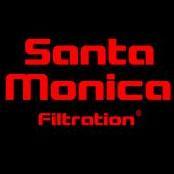Mega Powerful Nitrate and Phosphate Remover - DIY!
-
Topics
-
Latest Update
-
0
trade powerhead for less strong one
Hi all, recently downgraded my tank to small 2ft tank. I traded my old gyre wavemaker for a JaiBow LBS-30wavemaker. But its still too strong even on lowest setting of 1 haha. Anyone got any smaller wavemakers willing to trade? pls lmk, ill come find u at nearest mrt to make trade. Condition is still very new! -
1
-
0
Wts: Frags
Have the following to sell. Collection at loyang area or delivery can be arranged. Whatsapp 9071 8848 to deal. Thank you. -
0
2hd yellow dragon soul torch
Selling 2hd yellow dragon soul for $70.. Deal at punggol Sent from my SM-N980F using Tapatalk -
1
WTS Torch Coral frags
Hi all, A, B, D & E sold. C & F reserved for collection this weekend. G available - price reduced to $35. WA 96nineone03oneeight if interested thx.
-





Recommended Posts
Join the conversation
You can post now and register later. If you have an account, sign in now to post with your account.